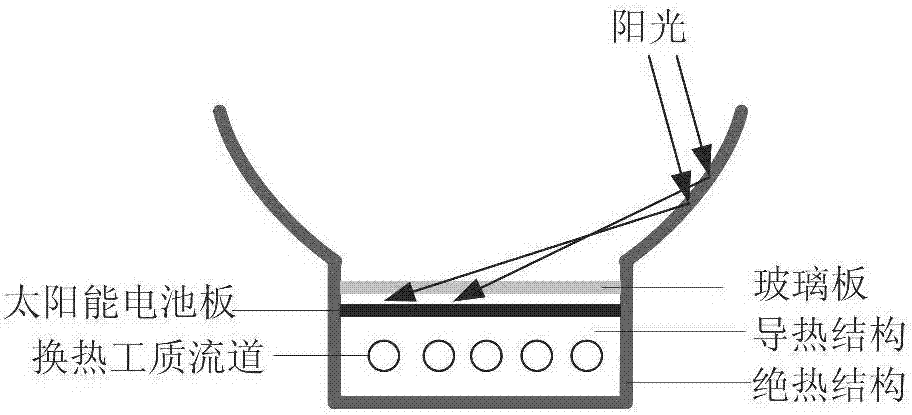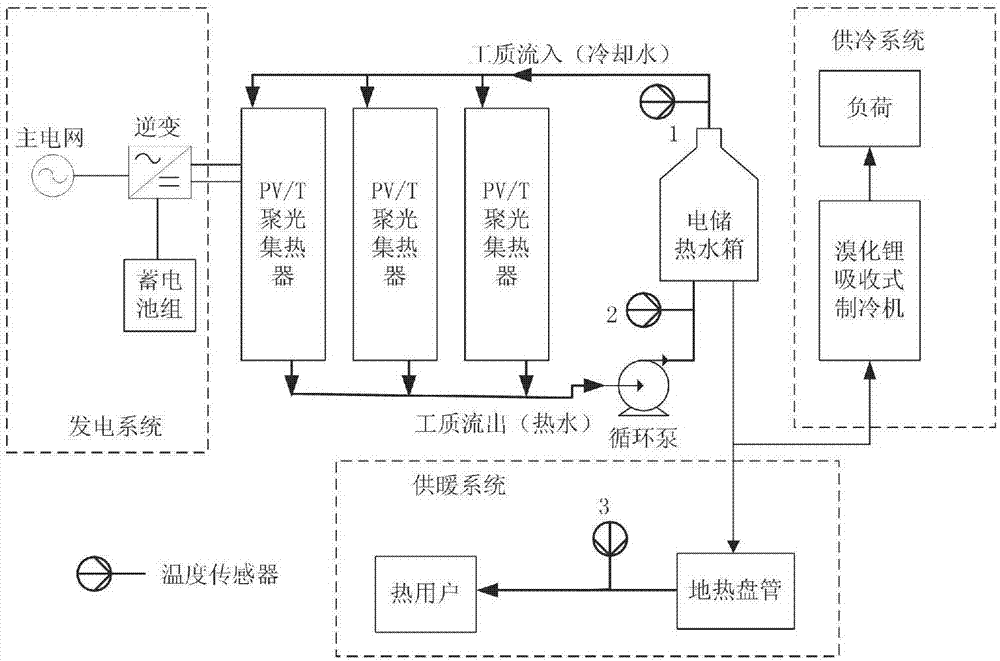Photovoltaic cooling-heating electric co-production system modeling method
A technology of cogeneration of cooling, heating and power, system modeling, applied in the direction of electric digital data processing, special data processing applications, instruments, etc., can solve the problems of reduced power generation efficiency, high simulation cost, and shortened life of battery components
- Summary
- Abstract
- Description
- Claims
- Application Information
AI Technical Summary
Problems solved by technology
Method used
Image
Examples
Embodiment 1
[0117] Example 1: Analysis of Combined Cooling, Heating and Power System
[0118] 1.1 Concentrating PV / T solar energy comprehensive utilization system
[0119] Based on the composite parabolic concentrator (CPC) type solar energy comprehensive utilization system, the CPC type solar energy comprehensive utilization system focuses the sunlight on the solar panel through the concentrator, which improves the light intensity per unit area of the solar panel without Excessive heat is generated on the panels, which improves the efficiency of photovoltaic power generation. On the other hand, the cooling medium of the CPC type solar energy comprehensive utilization system will also take away excess heat and use it as a path, which plays a positive role in the utilization of solar light and heat.
[0120] The CPC type solar energy comprehensive utilization system is composed of CPC concentrator, photoelectric system, heat exchange system and other auxiliary equipment. The structure ...
Embodiment 2
[0226] Embodiment 2: as Figure 1-Figure 18 As shown, a photovoltaic cogeneration system modeling and simulation device includes a host computer and a general real-time simulation platform. The general real-time simulation platform includes a 1# target machine for simulating the power supply network model and a 1# target machine for simulating the heating network model The 2# target machine, the host computer is connected to the 1# target machine and 2# target machine respectively through the switch.
[0227] Preferably, the above-mentioned universal real-time simulation platform is installed in the chassis 1, and the chassis 1 is provided with a multi-layer detachable partition 2, and the bosses at both ends of the partition 2 are limited to the symmetrical limit grooves provided on the two inner walls of the chassis 1, And it is fixed with a limit clip 3, and the partition plate 2 is provided with a T-shaped hole 4 for installing the target machine.
[0228] Preferably, the...
PUM
| Property | Measurement | Unit |
|---|---|---|
| Boltzmann constant | aaaaa | aaaaa |
Abstract
Description
Claims
Application Information
 Login to View More
Login to View More - R&D
- Intellectual Property
- Life Sciences
- Materials
- Tech Scout
- Unparalleled Data Quality
- Higher Quality Content
- 60% Fewer Hallucinations
Browse by: Latest US Patents, China's latest patents, Technical Efficacy Thesaurus, Application Domain, Technology Topic, Popular Technical Reports.
© 2025 PatSnap. All rights reserved.Legal|Privacy policy|Modern Slavery Act Transparency Statement|Sitemap|About US| Contact US: help@patsnap.com



